Accordingly, and though infused with an inevitable sense of belatedness, the critical revision of the history of slavery in Canada has brought to light the retrieval of slave narratives in the country as found in the “Book of Negroes” as well as in Black Nova Scotian accounts of slavery. Even if the “Book of Negroes” was an administrative documental account, it was equally a personal record that collected the individual transformation of Black people who signed up as Black Loyalists to fight against the United States in search of their freedom during the American Revolutionary War. The testimony of these individuals remains meaningful to this day in order to learn about the transit of Blacks up and down the US and British Canada frontier. Also, this removal of Black Loyalists from New York to Nova Scotia linked Upper Canada with slavery and, therefore, with the written and oral testimonies attached to it. As Siemerling states, “Nova Scotia is connected to several eighteenth-century slave and captivity narratives, written by black community leaders who described the province in their memoirs or took up residence there” (52).
Slavery was legally abolished in the British empire in 1834 but the Black population in what we know nowadays as Canada grew in numbers during the subsequent two decades as a result of a considerable influx of fugitive slaves from the United States. As the number of free Black people made their way into these Northern territories, the abolitionist movement focused its interest on their testimonies about their enslavement aiming to condemn slavery and to launch an ideological attack against such capital sin. By the time slavery was abolished in British North America, abolitionism was very well established at both sides of the frontier. This abetted ex-slaves, fugitive slaves and refugees to rely on the help of abolitionists and their compassionate humanitarianism to give account of their personal stories. Central to this ideological crusade against slavery, and to the eventual publication of their stories, was the mythical Underground Railroad, otherwise known as United States’ first civil rights movement. This secret network of safe houses and routes was used by fugitive slaves to escape and get their way into free states of Canada. The network was assisted by abolitionists as well as other active participants who were sympathetic to the cause of the escapees and committed to fight against slavery. They were “compelled by the philosophies of Abby Kelley Foster, William Lloyd Garrison, Lucretia Coffin Mott, and John Woolman, volunteers captain Daniel Drayton and Captain Alfred Fountain,” and were engaged in “bold acts of civil disobedience to federal laws that required citizens to support slaveholders and federal agents” (Snodgrass xxxi). Yet, taking into account the nature of the secrecy on the Underground Railroad there are a few historical sources available that provide information about the refugee slaves themselves. The greatest amount of information about the secret network comes directly from the abolitionists who published their stories and writings in books and newspapers. A notable exception to this practice is a collection of interviews published by American abolitionist Benjamin Drew in 1856 and titled A North-Side View of Slavery; the Refugee: or the Narratives of Fugitive Slaves in Canada . The book still bears importance and relevance since it is useful to answer questions regarding the actual travel of escapees between slavery and freedom, the kind of infamous conditions slaves endured while enslaved, and what St. Catharines and other Canadian cities were like when these fugitives set foot in the new country. Although the volume was created specifically as a response to Nehemiah Adam’s pro-slavery A South-Side View of Slavery (1855), it can be added to the catalogue of slave narratives that appeared from the late eighteenth and the nineteenth century in North America.
In Henry Louis Gates’s words, the slave narratives are “a unique creation on the long history of human bondage” because they represent the Africans’ testament of “their own stories about life in slavery and about the meaning of freedom” (xi). However, and acknowledging that the slave narratives support “the very foundation” of “the African American literary tradition, especially its canonical texts” (Gates xii), it should be highlighted that they also inform “the origins of other New World African literatures, even that of Canada” (“This is No Hearsay” 11), as George Elliott Clarke has claimed for so long. In fact, despite the Canadian publications of narratives of African American fugitives, many Canadian literary critics blithely prefer to classify the slave narrative as American and therefore alien to Canada. Interestingly, irrespective of the fact that slave narratives seem to remain absent from most anthologies of and guides to Canadian literature, Clarke’s aim of claiming the preeminence of Canadian slave narratives concurs with a recent theoretical trend that reads slavery as a transnational act and avows the fluidity of the North American frontiers acknowledging the cross-borderness of fugitive slaves’ texts. This move builds upon Clarke’s defense of “some estimated "6000 published narratives” by ex-slaves in Canada, most of them African American and many of them brief transcriptions from interviews, that despite having been published in “hundreds British journals”, are still marginalized in mainstream Canadian literary scholarship (“This is No Hearsay” 13). The Black Canadian scholar and poet laureate sentences that “no matter the snowy camouflages and inky smokescreens that our critics and historians throw over Canada’s own heritage of slavery” because “ History abhors lacunae , and so Literature rises to answer back, to shout out what had formerly only been whispered and sighed” (“This is No Hearsay” 14). There is no doubt that the sentence is being accomplished.
Clarke’s timely publication coincided with the “transnational turn” in Black Canadian studies. It is thus fit to admit that the work by Clarke, Siemerling or Nancy Kang have contributed to revitalize and shape the field of Black Studies in Canada by placing it in transnational and cross-border frameworks. Prompted by the poet laureate’s article, there was a revisiting of the nineteenth century in Canada to consider the different ways in which Blacks were seen, understood, and acknowledged. Accordingly, a revision of slave narratives, as a literary genre, became imperative since through the lens of this trasnational turn their reading had been rather restrictive.
To this new paradigm in Black Canadian studies, it is important to add Nele Sawallisch’s Fugitive Borders: Black Canadian Cross-Border Literature at Mid-Nineteenth Century , published in 2019. In her work, Sawallisch studies nineteenth-century autobiographical writing by enslaved men that emerged in or around the region of Canada: Richard Warren’s Narrative of the life and sufferings of Rev. Richard Warren (A Fugitive Slave) (1856), Thomas Smallwood’s A Narrative of Thomas Smallwood (Colored Man) (1851), Samuel Ringgold Ward’s Autobiography of a Fugitive Negro (1855), and Austin Steward’s Twenty-Two Years a Slave and Fourty Years a Freeman (1857). The book thus “relies on recent developments in Black Canadian studies that have turned to a transnational and explicitly cross-border understanding of Black Canadian history” (14). By rereading and re-contextualizing Black autobiographical writing of the nineteenth century, Sawallisch enlarges our understanding of slave narratives and defends that “these texts are a part of a transnational archive because they represent accounts of transnational, cross-border individuals who negotiate borders, personhood, and community” (14).
Читать дальше
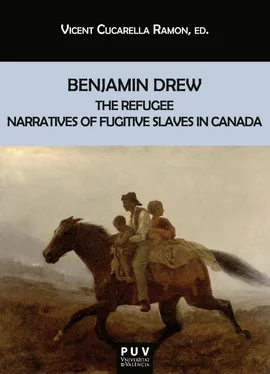



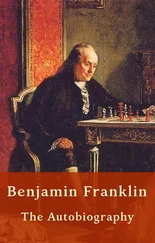
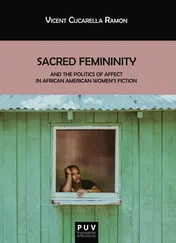


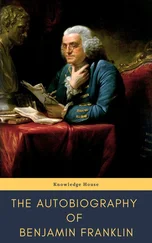

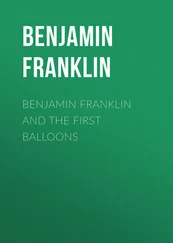
![Benjamin Franklin - Memoirs of Benjamin Franklin; Written by Himself. [Vol. 2 of 2]](/books/747975/benjamin-franklin-memoirs-of-benjamin-franklin-wr-thumb.webp)
![Benjamin Franklin - Memoirs of Benjamin Franklin; Written by Himself. [Vol. 1 of 2]](/books/748053/benjamin-franklin-memoirs-of-benjamin-franklin-wr-thumb.webp)